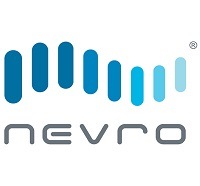 Nevro Corporation has announced the publication of new data validating the health economic benefits of 10kHz therapy, the company’s proprietary, high-frequency spinal cord stimulation (SCS) therapy, in both painful diabetic neuropathy (PDN) and non-surgical refractory back pain (NSRBP). These data were derived from studies and analyses that evaluated healthcare utilisation—doctor visits, medical procedures, tests and emergency room visits, and medication costs—and related cost data, including inpatient and outpatient service, medication, and out-of-pocket costs.
Nevro Corporation has announced the publication of new data validating the health economic benefits of 10kHz therapy, the company’s proprietary, high-frequency spinal cord stimulation (SCS) therapy, in both painful diabetic neuropathy (PDN) and non-surgical refractory back pain (NSRBP). These data were derived from studies and analyses that evaluated healthcare utilisation—doctor visits, medical procedures, tests and emergency room visits, and medication costs—and related cost data, including inpatient and outpatient service, medication, and out-of-pocket costs.
According to Nevro, results from a study evaluating the effect of 10kHz therapy on resources needed to manage and care for patients with PDN were recently published in the Journal of Managed Care and Specialty Pharmacy. In this study, participants were randomly assigned to 10kHz therapy or conventional medical management (CMM), with outcomes measured at six months. Results showed that the 10kHz therapy arm experienced about half the mean rate of hospitalisations per patient compared to the CMM group (0.08 vs 0.15). Additionally, the CMM group’s total healthcare costs per patient were approximately 51% higher compared to the 10kHz therapy group—equivalent to a mean annual cost per patient of US$9,532 vs US$6,300.
“This new research underscores the financial and resource cost of treating patients with PDN—a patient population that has long gone without effective treatment options provided by today’s standard of care,” said David Caraway, chief medical officer at Nevro. “I am grateful to the study researchers, who have provided managed care organisations with real-world data to help improve the treatment options available for patients with refractory PDN.”
This latest publication comes on the heels of other recent studies, Nevro further states in a press release, which add to the “robust body of evidence” supporting 10kHz therapy for the treatment of both PDN and chronic non-surgical back pain.
Another analysis, published in the Journal of Neurosurgery: Spine, evaluated whether 10kHz therapy plus CMM is cost effective compared to CMM alone for patients with chronic refractory back pain who are not candidates for surgery. This analysis showed that 10kHz therapy provides a higher quality of life (QOL) at a lower average cost per patient compared to CMM therapy and is predicted to be cost effective for the treatment of non-surgical back pain compared with CMM within 2.1 years. Nevro claims that this NSRBP study is the first randomised controlled trial in the USA to prospectively gather healthcare utilisation data to evaluate the cost-effectiveness of any type of SCS therapy to treat patients with non-surgical back pain.
Additional, separate analyses highlighted by Nevro include one published in Neuromodulation: Technology at the Neural Interface that evaluated the cost burden of 10kHz therapy in patients with chronic refractory low-back pain, and another published in the Journal of Diabetes Science and Technology that assessed healthcare utilisation data of 10kHz therapy in a real-world PDN patient population. In both studies, investigators concluded that 10kHz therapy was associated with significant reductions in healthcare costs.
“These publications demonstrate that our therapy is not only reshaping care for people with chronic pain, but also reducing costs for both patients and health systems,” said Kevin Thornal, CEO and president of Nevro. “This evidence underscores our commitment to producing highly effective, data-backed therapies that are accessible to those who need them most.”












